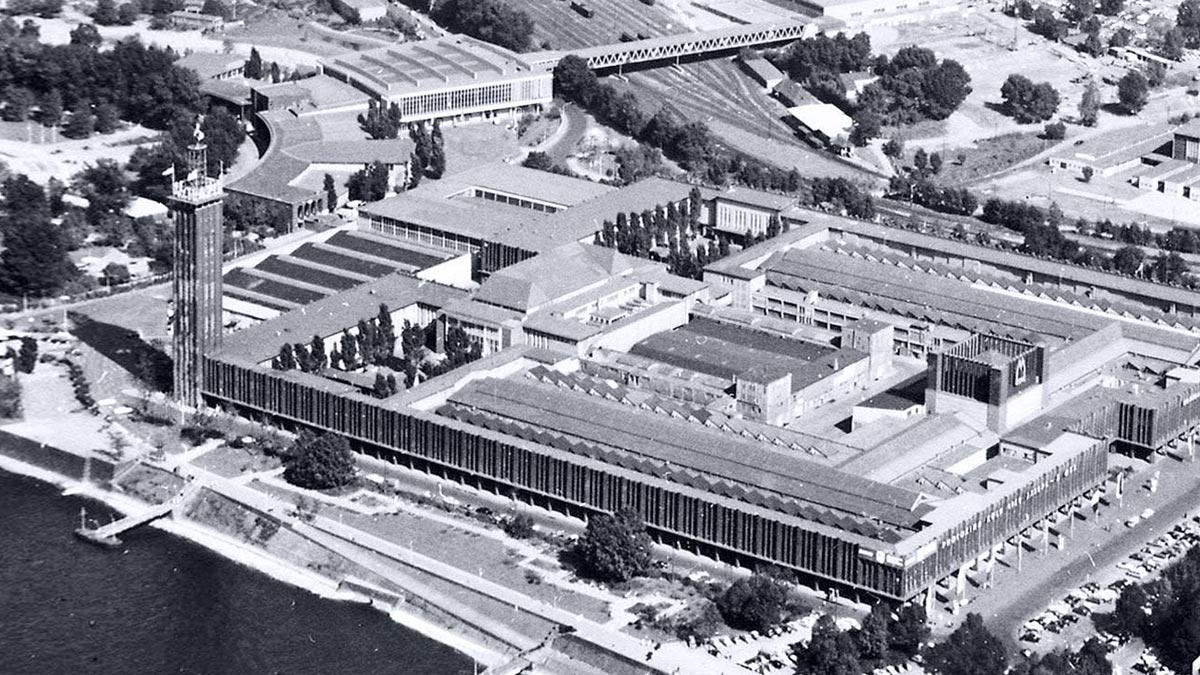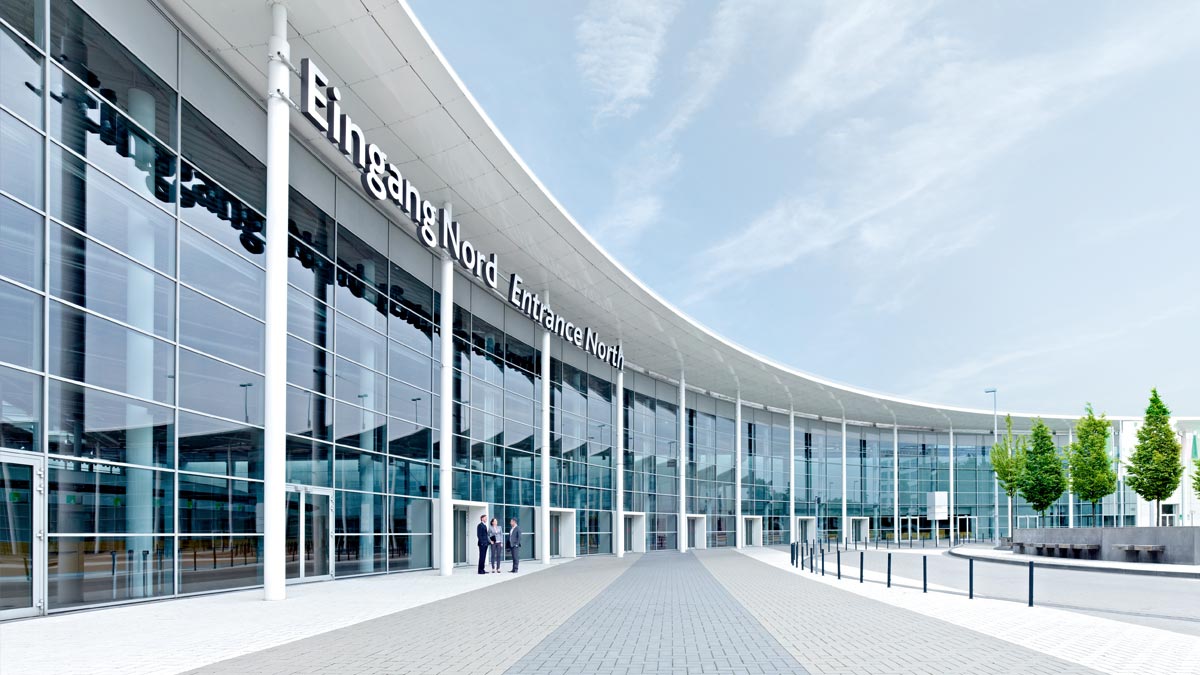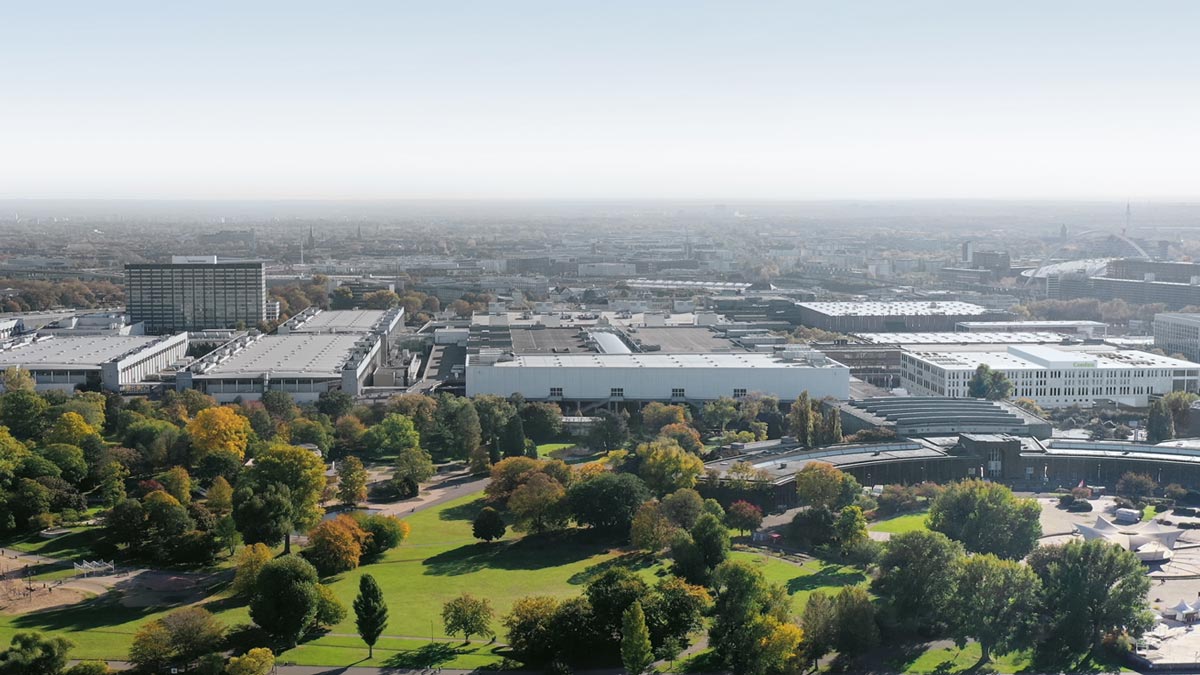The Koelnmesse in 10 decades
Take a look back with us










1st decade: 1924 to 1933 — The early years
On the initiative of Cologne's Mayor Konrad Adenauer, the trade fair company and the exhibition grounds in Deutz were established in the 1920s. The first event was opened in 1924. This was the spring trade fair, which featured hardware, textiles, and furniture. In response to the great demand for exhibition space, the exhibition grounds were expanded starting in 1926. The Rhineside Halls, the Staatenhaus, and the Messeturm were built by 1928. Thanks to the international press exhibition Pressa in 1928, the new trade fair location became known all over the world.
2nd decade: 1934 to 1943 — National Socialism and war
After seizing power in Germany in 1933, National Socialists took over leading positions in the trade fair company and brought Cologne’s trade fairs in line with their ideology. Propaganda events such as "The Brown Trade Fair – The German Week" and "The Eternal People – A Reich Exhibition" were held in the Rhineside Halls. During World War II the exhibition grounds were misused as a camp for Jews, Sinti, Roma, prisoners of war, and other groups who were persecuted by National Socialism. At times it was used as a satellite concentration camp.
3rd decade: 1944 to 1953 – Reconstruction
The war was followed by a period of rapid reconstruction. The first postwar exhibitions and trade fairs were held as early as 1947. A total of 52,000 m² of hall area had been rebuilt by 1950. Koelnmesse's administrators recognized early on the trend toward specialization in the trade fair industry, and they proceeded to focus on specialized trade fairs such as photokina, Anuga, the Cologne furniture fair, and the specialized office show for Western Germany (the predecessor of ORGATEC). The company's first subsidiary abroad was opened in London in 1950.
4th decade: 1954 to 1963 – The "economic miracle"
Many events at Koelnmesse developed into the leading trade fairs for their respective sectors. The trade fair company continued to expand, and a total of 100,000 m² of hall area was available by 1961. The Men's Fashion Week and the "Baby" trade fair (the predecessor of Kind + Jugend) celebrated their premieres during this decade. The household and hardware fair established itself as a leading meeting point for its sector.
5th decade: 1964 to 1973 – Expansion
In order to finance the modernization and expansion of its exhibition grounds, Koelnmesse was converted from an operating company to a holding company. Since then it has financed all of its construction and modernization measures itself. In the years until 1971, the exhibition space was expanded to approximately 160,000 m². The trend toward specialized trade fairs continued. ISM – The International Sweets and Biscuits Fair – was held for the first time in 1971.
6th decade: 1974 to 1983 – Internationalization
As a recognized organizer of specialized trade fairs with a global impact, Koelnmesse opened the International Service Center in 1981. Since then it has organized trade fair participation all over the world. The exhibition grounds in Deutz were also further expanded by the addition of the Congress Center East. In 1983 a total of 230,000 m² of hall area was available. Starting in 1974, the International Art Market was held in the Cologne trade fair halls; over the years this event evolved into ART COLOGNE.
7th decade: 1984 to 1993 – Leading trade fairs and congresses
During the 1980s, Koelnmesse's leading global trade fairs ensured the company a leading role on the world stage, in spite of fierce international competition. The congress business became increasingly important. The city of Cologne and Koelnmesse therefore decided in 1993 to establish the joint operating company KölnKongress. Since 1994 this company has been marketing the congress business of Koelnmesse and the city's banqueting hall, the Gürzenich. Since 1992 Cologne has been the stage of yet another leading global trade fair – the International Dental Show.
8th decade: 1984 to 1993 – Leading trade fairs and congresses
During the 1980s, Koelnmesse's leading global trade fairs ensured the company a leading role on the world stage, in spite of fierce international competition. The congress business became increasingly important. The city of Cologne and Koelnmesse therefore decided in 1993 to establish the joint operating company KölnKongress. Since 1994 this company has been marketing the congress business of Koelnmesse and the city's banqueting hall, the Gürzenich. Since 1992 Cologne has been the stage of yet another leading global trade fair – the International Dental Show.
9th decade: 2004 to 2013 – The new Koelnmesse
By 2006 Koelnmesse had built four new trade fair halls, the Congress Center North, the Entrance North, and the Boulevard. The exhibition grounds grew to encompass a total of 284,000 m² of hall area and 100,000 m² of outdoor area. As a result, Koelnmesse has the fifth-largest exhibition grounds in the world. The German Pavilion at EXPO in Shanghai in 2010 received a number of awards. The digital world has entered Cologne's trade fair portfolio through the gamescom and dmexco trade fairs and is strengthening the outstanding position of Cologne as a media center in Germany. The exhibition grounds in Deutz are increasingly becoming a magnet for new trade fairs organized by outside companies, which are bringing new target groups and attractive sectors to Cologne.
10th decade: 2014 to 2023 – The trade fair grounds in Cologne are becoming more modern and the portfolio is growing
In 2014, “Koelnmesse 3.0”, the largest investment program in the history of Koelnmesse, was launched. The site was modernized and optimally supplemented with new buildings. The trade fair portfolio was also growing in Cologne and worldwide: numerous trade fair formats that are successful in Cologne are expanding abroad. At EXPO 2020 in Dubai, the German pavilion organized by Koelnmesse was awarded the most important prizes. The global pandemic was also hitting Koelnmesse hard, but after numerous trade fair cancellations, it was back on the road to success in 2023 and defined the first key points of its sustainability strategy. Measures such as the complete switch to green electricity are already having an impact on the path to climate neutrality by 2030.
